The Ultimate Guide to Royal Gramma Fish Tank Requirements
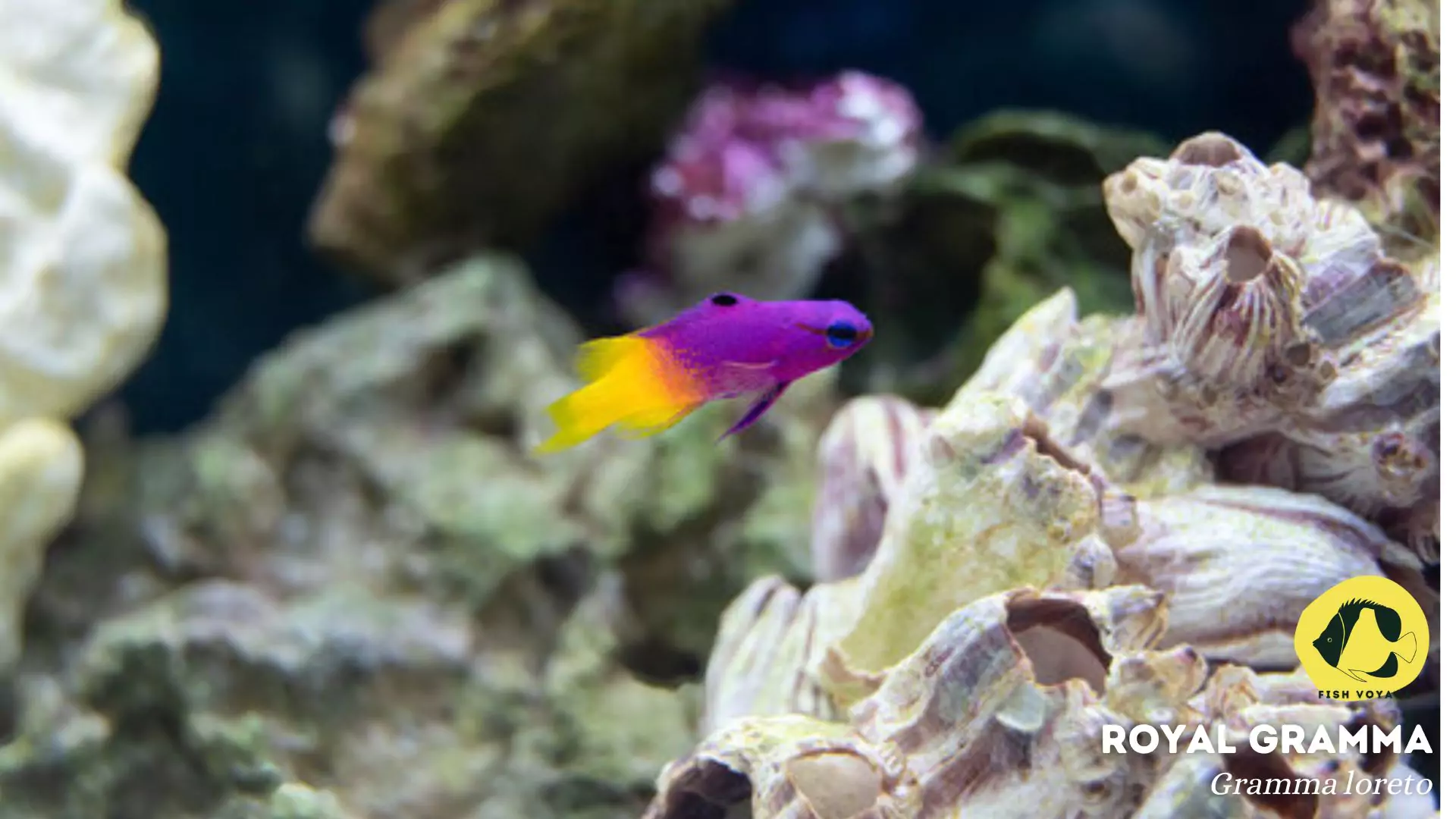
In the captivating world of aquarium enthusiasts, the Royal Gramma fish stands as a jewel with its vibrant colors and distinctive personality. With its radiant purple and yellow hues, this small yet captivating species from the Caribbean has become a prized choice for aquarists worldwide. However, the key to unlocking the full splendor of the Royal Gramma lies in comprehending and meticulously meeting its specific tank requirements. In this guide, we will delve into the essential elements that contribute to the well-being of these enchanting creatures, offering insights on optimal tank conditions, compatible tank mates, and the nuances of their behavior.
Embark on a journey to discover the art of maintaining a thriving Royal Gramma aquarium, ensuring both the beauty of your tank and the happiness of these charming marine inhabitants. Dive in with us as we explore the intricacies of Royal Gramma fish care, providing you with the knowledge to create a home that mirrors the wonders of their natural habitat.
About Royal Gramma Fish
Striking Physical Characteristics
The Royal Gramma, scientifically known as Gramma loreto, boasts a mesmerizing color palette that includes a deep royal purple anterior fading into a golden yellow posterior. This distinct coloration, combined with a contrasting black spot on its dorsal fin, makes the Royal Gramma a visually striking and easily recognizable species in the aquarium world.
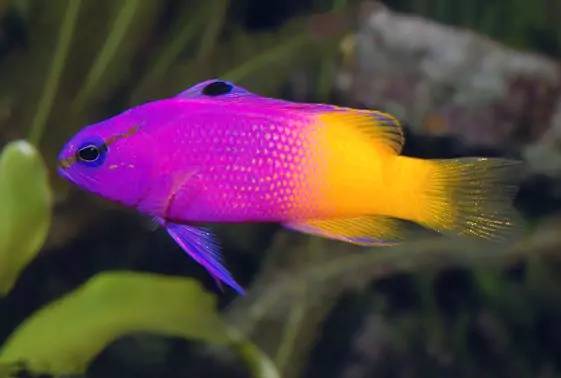
Natural Habitat and Behavior
Originating from the warm waters of the Caribbean, specifically around reefs and rocky outcrops, Royal Grammas prefer the shelter of crevices and caves. Their natural habitat influences their behavior, as they are known to be reclusive at times, seeking refuge in hiding spots. Understanding their inclination towards such environments is crucial for recreating a setting that mimics their native surroundings in captivity.
Popular Choice for Aquarium Enthusiasts
Renowned for their vibrant colors and manageable size, Royal Grammas have earned a well-deserved reputation as a top choice among aquarium enthusiasts. Their relatively peaceful nature and adaptability to captive environments make them suitable for both beginners and experienced hobbyists alike. The Royal Gramma’s compatibility with a variety of tank setups and its engaging behavior contribute to its popularity in the diverse landscape of home aquariums.
Incorporating the striking visual appeal, natural inclinations, and popularity of the Royal Gramma into your aquarium not only enhances the aesthetic appeal of your setup but also provides a rewarding experience for fishkeepers of all levels.
Tank Size and Dimensions
Ideal Tank Size for Royal Gramma Fish
For optimal well-being and vibrant behavior, a minimum tank size of 30 gallons is recommended for a single Royal Gramma. Larger tanks, such as 50 gallons or more, are advisable for those looking to keep a community of Royal Grammas or include other tankmates. The spacious environment allows them to express their natural behaviors and establish territories comfortably.
Considerations for Height, Length, and Width
Height: Ensure a tank with sufficient vertical space, as Royal Grammas appreciate vertical swimming areas. A tank with a height of at least 16 inches or more accommodates their vertical movements and provides a more dynamic aquatic environment.
Length and Width: A rectangular tank with dimensions of 36 inches (length) by 18 inches (width) or larger is preferable. The elongated shape mimics the rocky structures of their natural habitat, offering ample space for exploration and retreat.
Importance of Providing Ample Swimming Space
Royal Grammas are known for their curious and active nature. To promote their well-being, it’s crucial to provide a spacious tank that allows for unrestricted swimming. Adequate swimming space reduces stress, enhances their natural behaviors, and fosters a healthier, more vibrant aquarium community.
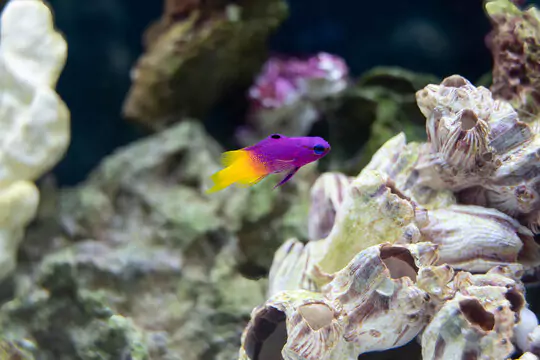
Creating an environment that aligns with the Royal Gramma’s need for space not only promotes their physical health but also contributes to a visually captivating aquarium. Remember, the key lies in balancing the tank size to accommodate their natural behaviors while ensuring the overall harmony of the aquatic community.
Water Parameters
Optimal Temperature Range for Royal Gramma
Maintain a water temperature between 72°F to 78°F (22°C to 26°C) to mimic the warm tropical waters of the Caribbean, the native habitat of Royal Grammas. Consistent temperature regulation is crucial for their metabolic processes, digestion, and overall well-being.
pH Levels, Hardness, and Salinity Requirements
- pH Levels: Aim for a stable pH level ranging from 8.1 to 8.This ensures a slightly alkaline environment, resembling the conditions of coral reefs where Royal Grammas are commonly found.
- Hardness: Keep water hardness in the range of 8 to 12 dKH to provide the essential minerals required for the health of both the fish and any live coral present in the tank.
- Salinity: Maintain a specific gravity between 1.020 and 1.025 to replicate the salinity of their natural habitat. Consistency in salinity is paramount to prevent stress and support the osmoregulation processes of the Royal Gramma.
Significance of Maintaining Stable Water Conditions
Royal Grammas are sensitive to fluctuations in water parameters, and maintaining stability is paramount. Sudden changes in temperature, pH, or salinity can induce stress and compromise the health of these vibrant fish. Regular monitoring and adjustments, coupled with water changes using high-quality marine salt, contribute to a stable and thriving aquatic environment.
Creating a habitat that mirrors the Royal Gramma’s natural conditions requires a meticulous approach to water quality. By adhering to these specific parameters, you not only promote the health and longevity of your Royal Gramma but also lay the foundation for a flourishing marine ecosystem within your aquarium.
Filtration and Water Quality
Importance of Efficient Filtration
Efficient filtration is the cornerstone of a healthy Royal Gramma aquarium. It helps in removing impurities, toxins, and debris, ensuring a clean and stable environment. Adequate filtration mimics the natural cleansing processes found in their native habitats, promoting optimal conditions for the well-being of your Royal Gramma fish.
Biological, Mechanical, and Chemical Filtration Options
- Biological Filtration: Foster the growth of beneficial bacteria by incorporating live rock or a dedicated biological filter. These bacteria play a vital role in breaking down ammonia and nitrites, converting them into less harmful nitrates.
- Mechanical Filtration: Utilize mechanical filtration mechanisms, such as sponge filters or filter pads, to physically remove debris and particulate matter from the water. Regular cleaning of these elements prevents the accumulation of waste, maintaining water clarity.
- Chemical Filtration: Employ chemical filtration media, like activated carbon, to adsorb impurities and improve water quality. This helps in removing discoloration and odors, providing a pristine environment for your Royal Gramma.
Regular Water Testing and Maintenance
- Regular water testing is imperative to monitor key parameters like ammonia, nitrites, nitrates, pH, and salinity. Establish a routine testing schedule to promptly identify any fluctuations and address them before they impact the health of your Royal Gramma.
- Routine water changes, typically 10-20% every 2-4 weeks, contribute to the removal of accumulated nitrates and replenish essential minerals. Consistent maintenance ensures a stable and thriving ecosystem within your aquarium, promoting the longevity of your Royal Gramma.
Efficient filtration is not only a practical necessity but also a crucial element in fostering a flourishing underwater world for your Royal Gramma. By embracing a holistic approach that encompasses biological, mechanical, and chemical filtration methods, coupled with vigilant water testing and maintenance, you create an environment where your Royal Gramma can thrive and showcase its vibrant colors and natural behaviors.
Tank Setup and Decor
Suitable Substrate for the Aquarium
Opt for a fine to medium-sized substrate, such as aragonite sand or crushed coral, to emulate the sandy seabeds of the Royal Gramma’s natural habitat. This substrate not only enhances the visual appeal of the tank but also facilitates natural digging behaviors and supports the growth of beneficial bacteria.
Hiding Spots and Caves for Royal Gramma
Integrate rock structures and caves to create secure hiding spots for Royal Grammas. These fish appreciate sheltered areas to retreat to when feeling stressed or seeking refuge. The inclusion of caves also aligns with their natural inclination to dwell in crevices within rocky formations.
Choosing Appropriate Decorations and Plants
- Opt for artificial or live corals to mimic the coral reef environment of the Caribbean, creating a visually stunning backdrop for your Royal Gramma aquarium. Ensure the chosen corals are reef-safe and compatible with the specific needs of your fish.
- Select decorations that offer vertical elements, as Royal Grammas enjoy exploring different levels of the tank. Driftwood, PVC pipes, and strategically placed rocks contribute to a dynamic and engaging habitat.
- Live or artificial plants, such as sea fans and soft corals, can be added to enhance the aesthetics and provide additional hiding spots. Ensure that any live plants chosen are suitable for marine aquariums and won’t adversely affect water quality.

Creating an aesthetically pleasing and functionally enriching tank setup for your Royal Gramma involves thoughtful consideration of substrate, hiding spots, and decorative elements. By replicating their natural habitat with a well-planned aquarium layout, you not only cater to the behavioral needs of your fish but also create a captivating underwater landscape that is sure to be a focal point of admiration.
Compatible Tank Mates
Top 5 Compatible Tank Mates
Clownfish (Amphiprion sp.)
- Features: Known for their vibrant colors and entertaining behavior, clownfish are hardy companions for Royal Grammas.
- Compatibility Reason: Both species inhabit similar reef environments and share a peaceful temperament, making them ideal tank mates.
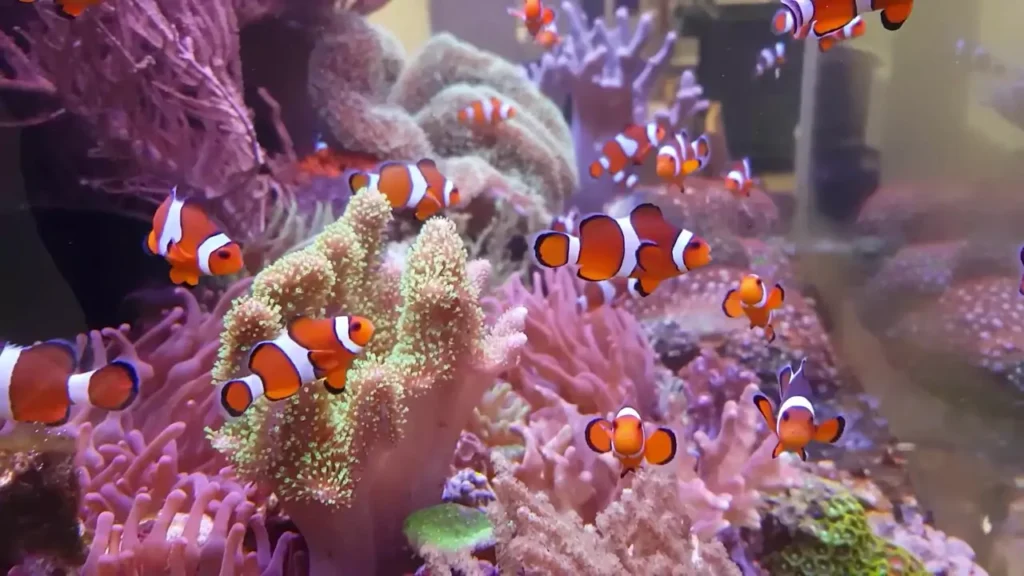
Firefish Goby (Nemateleotris sp.)
- Features: Firefish gobies add vertical movement to the tank with their elongated bodies and striking dorsal fins.
- Compatibility Reason: These fish are non-aggressive and occupy different levels of the tank, reducing competition for territory.
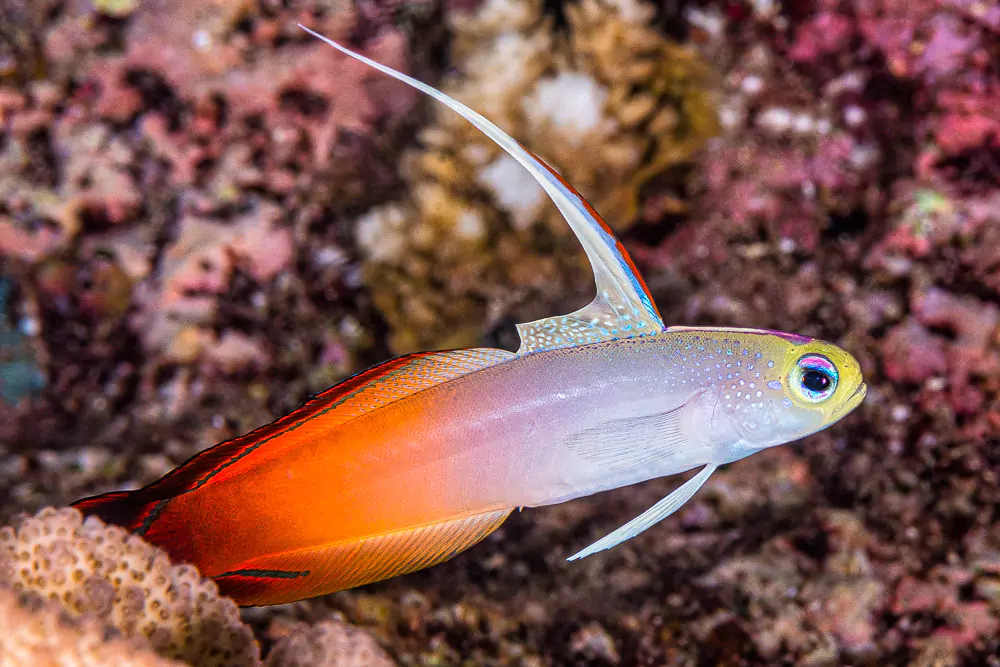
Cleaner Shrimp (Lysmata sp.)
- Features: Cleaner shrimp are colorful, active, and serve a dual purpose by helping with tank cleanliness.
- Compatibility Reason: Their symbiotic relationship with Royal Grammas involves offering cleaning services, creating a natural and beneficial interaction.
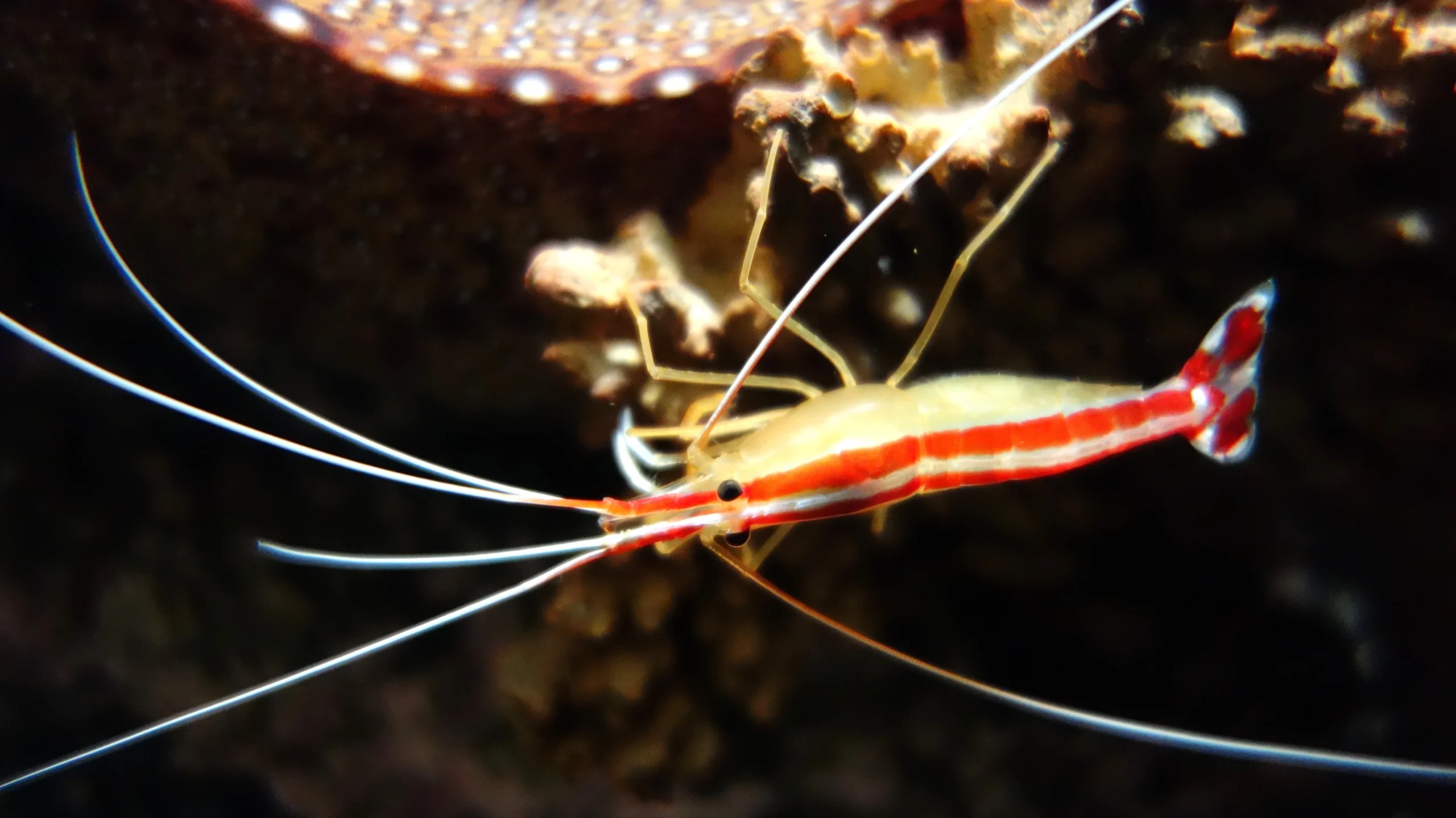
Banggai Cardinalfish (Pterapogon kauderni)
- Features: Recognizable by their bold black stripes, Banggai cardinalfish are peaceful and visually striking.
- Compatibility Reason: Both species share a calm demeanor, making them compatible tank mates in a community setup.
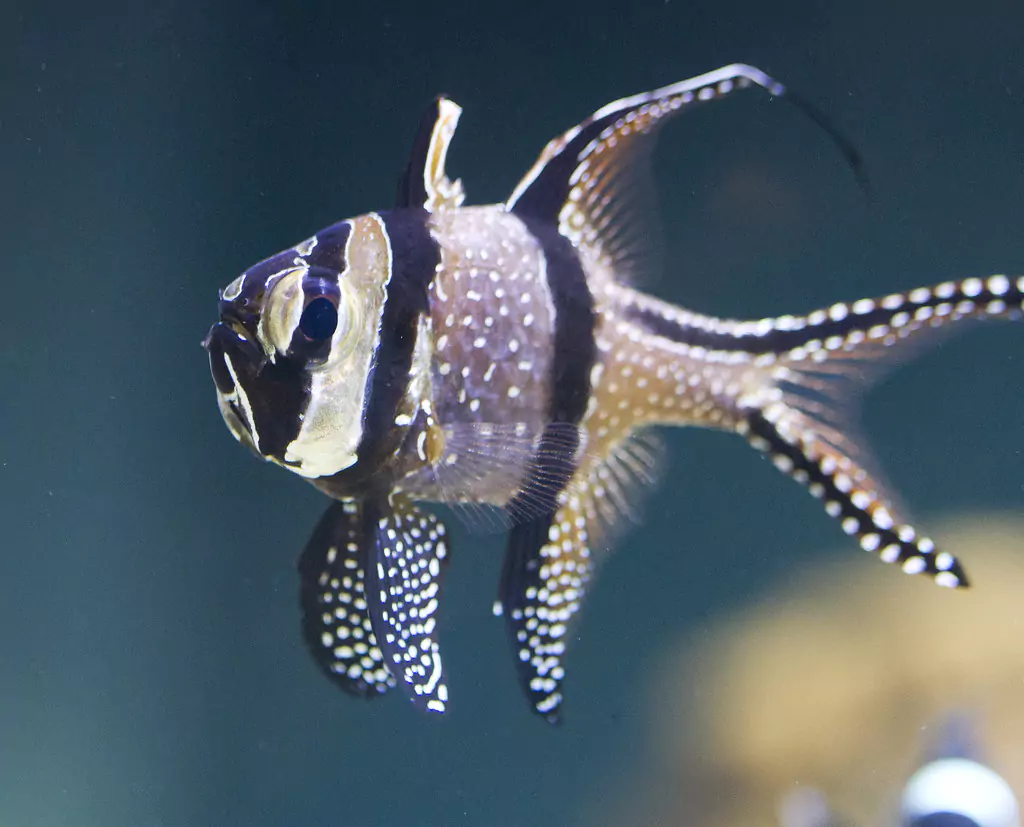
Pajama Cardinalfish (Sphaeramia nematoptera)
- Features: Pajama cardinalfish exhibit distinctive coloration with a mix of yellow, orange, and dark spots.
- Compatibility Reason: These fish are generally peaceful, and their unique appearance adds diversity to the tank without causing conflicts.

Potential Conflicts and Considerations
- Aggressive Tank Mates: Avoid aggressive or territorial fish species that may intimidate the Royal Gramma, leading to stress and potential conflicts.
- Overcrowding: Be mindful of the tank’s capacity and avoid overstocking, as overcrowding can result in competition for resources and aggression among tank mates.
Creating a Harmonious Community in the Tank
- Observation and Monitoring: Regularly observe the behavior of tank mates to identify any signs of aggression or stress. Remove any aggressive individuals promptly.
- Proper Introductions: Introduce new tank mates gradually to allow the Royal Gramma to adjust and reduce the likelihood of territorial disputes.
- Provide Ample Hiding Spots: Ensuring there are sufficient hiding spots and territories in the tank allows each fish to establish its space, reducing potential conflicts.
By carefully selecting compatible tank mates based on their features and temperaments, and implementing measures to prevent conflicts, you can create a harmonious community in your aquarium. The strategic inclusion of diverse species not only enhances the visual appeal but also contributes to the overall well-being of your Royal Gramma and its tank mates.
Feeding Guidelines
Royal Gramma’s Natural Diet
In the wild, Royal Grammas primarily feed on a diet consisting of small crustaceans, zooplankton, and various invertebrates found near coral reefs. Understanding their natural feeding behaviors provides insights into replicating a balanced diet in captivity.
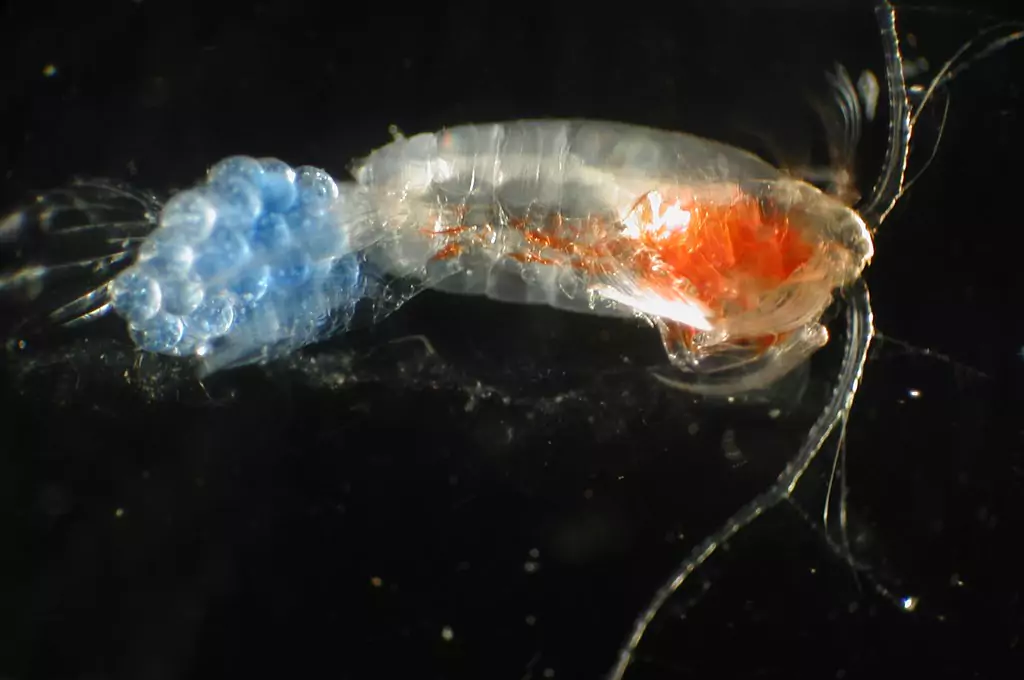
Best Practices for Feeding in Captivity
- Varied Diet: Offer a varied diet to ensure nutritional diversity. This can include high-quality flakes, pellets, and frozen foods designed for marine fish. A mix of food types mimics the natural feeding patterns of Royal Grammas.
- Frequent Feedings: Feed smaller portions multiple times a day rather than a single large meal. This approach aligns with their natural tendency to forage throughout the day, promoting a more active and healthy lifestyle.
- Monitor and Adjust: Regularly observe the fish during feeding sessions. Adjust the quantity and frequency based on their consumption habits to prevent overfeeding and maintain water quality.
Recommended Commercial and Live Foods
- Commercial Pellets and Flakes: Opt for high-quality marine fish pellets and flakes rich in protein and essential nutrients. Look for formulations designed for carnivorous marine species.
- Frozen Foods: Offer a variety of frozen foods, such as brine shrimp, mysis shrimp, and enriched artemia. These options closely resemble the Royal Gramma’s natural prey, promoting a well-rounded diet.
- Live Foods: Supplement the diet with occasional live foods like copepods and small amphipods. These live foods not only provide nutritional benefits but also stimulate natural hunting behaviors.
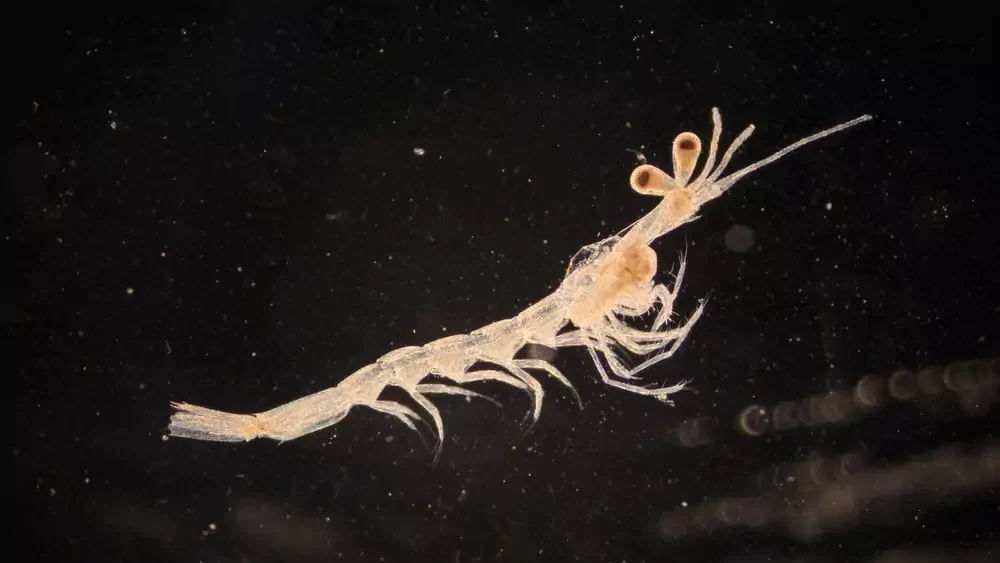
Feeding your Royal Gramma a well-balanced and diverse diet is crucial for their health and vibrancy in captivity. By incorporating a mix of commercial, frozen, and live foods, you not only satisfy their nutritional requirements but also engage their natural instincts, contributing to a thriving and contented fish in your aquarium.
Health and Disease Prevention
Signs of a Healthy Royal Gramma
- Vibrant Coloration: A healthy Royal Gramma exhibits vibrant and well-defined colors, with no signs of discoloration or fading.
- Active Behavior: Look for active swimming, exploration, and interaction with tank mates. A healthy Royal Gramma is alert and responsive to its environment.
- Eating Habits: A hearty appetite is a positive sign. Regular and enthusiastic feeding indicates good health and well-being.
- Clear Eyes and Fins: Healthy Royal Grammas have clear eyes, free from cloudiness or redness, and intact fins without tears or lesions.
Common Diseases and Preventive Measures
Ich (White Spot Disease)
- Signs: White cysts on the skin, clamped fins, and increased mucus production.
- Prevention: Maintain stable water conditions, avoid overcrowding, and quarantine new additions before introducing them to the main tank.
Fin Rot
- Signs: Torn or frayed fins, discoloration, and lethargy.
- Prevention: Ensure proper water quality, regular water changes, and a well-maintained filtration system.
Velvet Disease
- Signs: Fine gold or rust-colored dust on the skin, rapid gill movement, and lethargy.
- Prevention: Quarantine new fish, maintain optimal water parameters, and avoid introducing stressed individuals.
Bacterial Infections
- Signs: Open sores, swelling, and lethargy.
- Prevention: Maintain a clean tank environment, avoid overfeeding, and provide a balanced diet.
Quarantine Procedures for New Additions
- Isolation Period: Quarantine new Royal Grammas in a separate tank for at least 2-4 weeks before introducing them to the main aquarium.
- Observation: Monitor the quarantined fish for signs of disease or abnormal behavior. Treat any issues promptly before adding them to the main tank.
- Water Parameters: Ensure that the quarantine tank mimics the conditions of the main tank, including temperature, salinity, and pH levels.
- Prophylactic Treatment: Consider prophylactic treatments for parasites and infections during the quarantine period to prevent the introduction of diseases to the main aquarium.
By staying vigilant for signs of health and promptly addressing any issues, implementing preventive measures, and adhering to thorough quarantine procedures for new additions, you can maintain the well-being of your Royal Gramma and foster a healthy and thriving aquarium environment.
Tips for Maintaining a Happy Tank
Regular Monitoring and Observation
Regularly monitor water parameters, temperature, and overall tank conditions to promptly identify any deviations. This proactive approach allows for timely intervention and ensures a stable environment.
Behavioral Cues to Watch For
Observe the behavior of your Royal Gramma closely. Healthy fish exhibit active swimming, vibrant colors, and interactions with tank mates. Any sudden changes, lethargy, or unusual hiding may indicate stress or health issues.
Making Adjustments Based on the Fish’s Needs
Tailor the tank setup based on your Royal Gramma’s preferences. Provide ample hiding spots, adjust lighting levels, and ensure water flow suits their natural habitat. Adapting the environment to their needs fosters a stress-free and contented atmosphere.
Maintaining a happy tank for your Royal Gramma involves a proactive approach through regular monitoring, attentive observation of behavioral cues, and making thoughtful adjustments based on their unique requirements. By incorporating these tips, you create an environment that not only promotes the well-being of your fish but also enhances the overall joy of fishkeeping.
Conclusion
In conclusion, creating a thriving aquarium for Royal Gramma fish necessitates a comprehensive understanding of their specific requirements. As we’ve explored key aspects such as tank size, water parameters, tank setup, compatible tank mates, feeding guidelines, and health considerations, it becomes evident that a well-informed approach is paramount. Maintaining stable water conditions, providing suitable tank mates, and offering a balanced diet contribute to the overall well-being of these captivating marine creatures.
A responsible and informed approach to fish keeping not only ensures the health and happiness of Royal Grammas but also contributes to the sustainability of the aquarium hobby. By following best practices, observing signs of health, and implementing preventive measures, aquarists can create an environment that mirrors the beauty of the ocean within the confines of their tanks.
As you embark on your journey of Royal Gramma fish keeping, I encourage you to share your experiences and insights. Feel free to ask questions or provide feedback, fostering a community of aquarium enthusiasts committed to the well-being of their aquatic companions. Together, we can contribute to the knowledge and enjoyment of this rewarding hobby.
Additional Resources
Reputable Forums
Explore reputable aquarium forums where experienced hobbyists share insights and advice.
Relevant Books
Dive deeper into Royal Gramma care and marine aquarium keeping with these informative books.
- The Conscientious Marine Aquarist by Robert M. Fenner
- Saltwater Aquariums For Dummies by Gregory Skomal
These additional resources offer a wealth of information, tips, and real-world experiences from fellow enthusiasts. Forums provide a platform for interactive discussions, while books offer in-depth knowledge to help you become a more informed and successful Royal Gramma keeper. Remember to stay engaged with the community and continuously expand your understanding of marine aquariums for a fulfilling and rewarding experience.
Frequently Asked Questions (FAQs)
1. What is the ideal tank size for keeping Royal Gramma fish?
The ideal tank size for a single Royal Gramma is a minimum of 30 gallons. Larger tanks, such as 50 gallons or more, are recommended for those planning a community setup.
2. What water parameters should I maintain for Royal Gramma fish?
Royal Grammas thrive in a temperature range of 72°F to 78°F, a pH level between 8.1 and 8.4, and a specific gravity of 1.020 to 1.025. Consistent monitoring and maintenance of these parameters are essential for their well-being.
3. Can Royal Grammas coexist with other fish species in the same tank?
Yes, Royal Grammas are generally peaceful and can coexist with compatible tank mates. Popular choices include Clownfish, Firefish Goby, and Banggai Cardinalfish. However, careful observation and proper introductions are key to a harmonious community.
4. What should I feed my Royal Gramma fish for a balanced diet?
Offer a varied diet consisting of high-quality marine fish pellets, flakes, frozen foods like brine shrimp and mysis shrimp, and occasional live foods. Feeding smaller portions multiple times a day supports their natural foraging behavior.
5. How do I prevent diseases in my Royal Gramma aquarium?
Disease prevention involves maintaining stable water conditions, avoiding overstocking, and implementing quarantine procedures for new additions. Regular observation, water testing, and prompt treatment of any signs of illness contribute to a healthy environment.

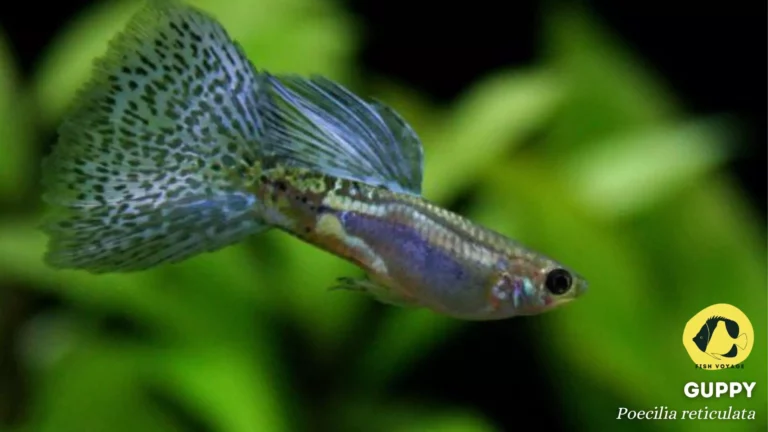
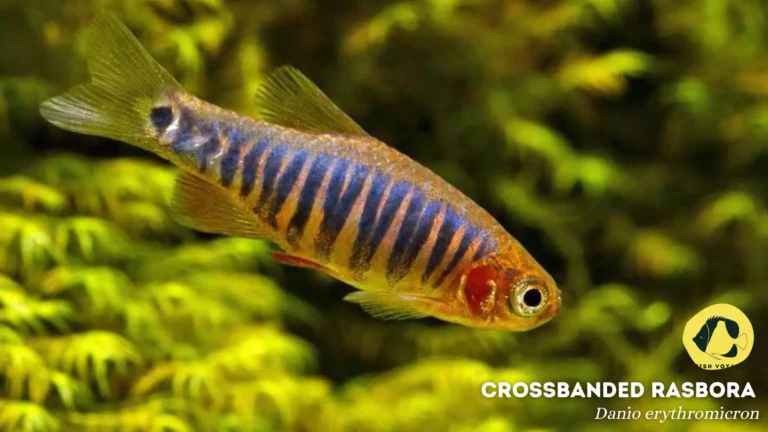


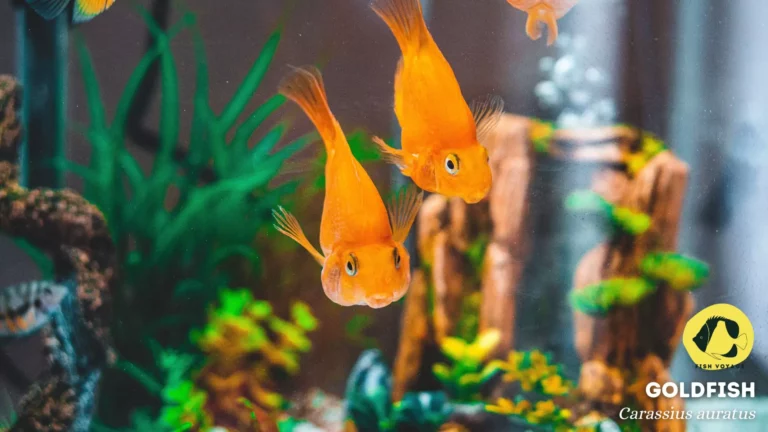

Hey, cool post There is an issue with your website in Internet Explorer; could you please check this? Because of this issue, many people will overlook your excellent article because IE is still the most used browser.
I’ve been a loyal follower of this amazing website for the last few days. The brilliant content provided to users shows the site owner’s dedication. I’m extremely impressed and hope they continue posting such excellent content.
Thank you so much for your incredibly kind words! It means the world to us to hear that our content resonates with you. Rest assured, we’re committed to maintaining the same level of dedication and excellence in all our future posts. We’re thrilled to have you as a loyal follower and look forward to continuing to impress you with our content. Stay tuned for more exciting updates!